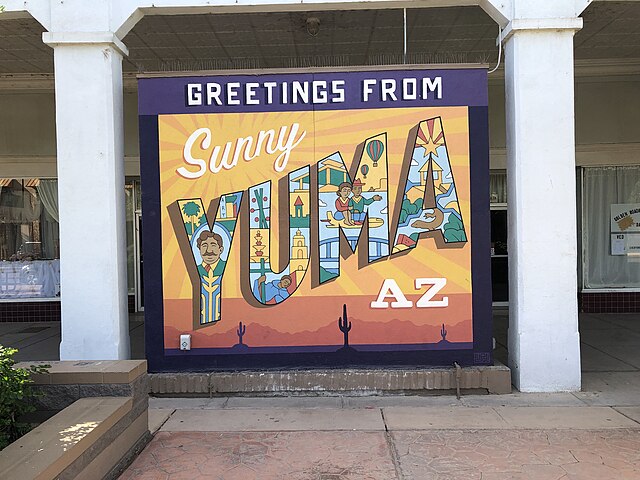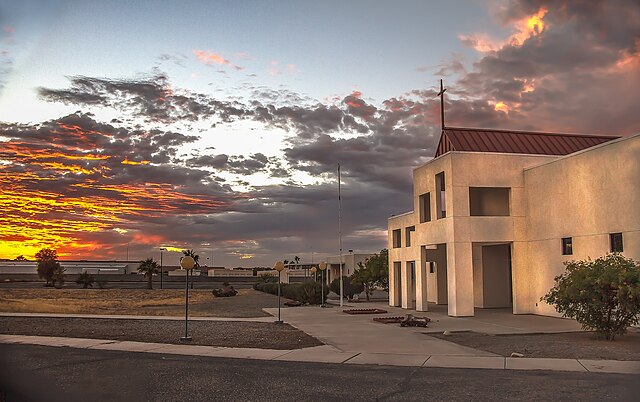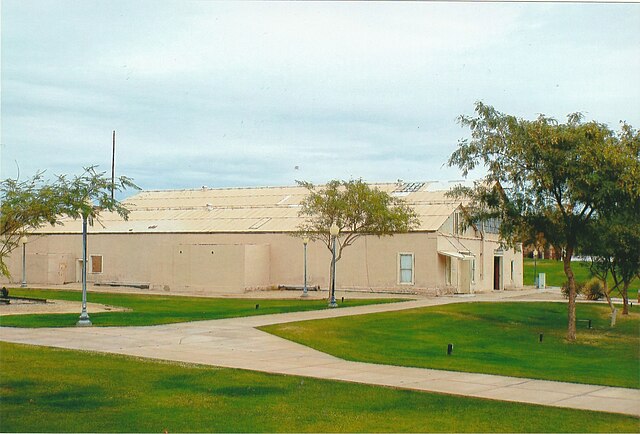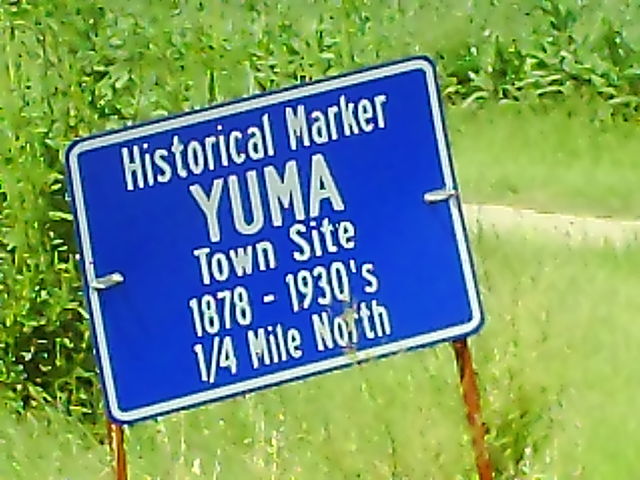Have you ever wondered what it’s like to live in one of America’s sunniest cities? Welcome to Yuma, Arizona, where the desert climate creates a unique weather experience that’s both challenging and remarkable. Located in the southwestern corner of Arizona, Yuma experiences a hot desert climate that’s characterized by extreme heat, minimal rainfall, and abundant sunshine throughout the year.
In Yuma, the summers are sweltering and arid, the winters are cool and dry, and it is mostly clear year round. Over the course of the year, the temperature typically varies from 48°F to 107°F and is rarely below 41°F or above 112°F. This temperature range gives you a clear picture of what to expect when planning your visit or considering a move to this desert oasis.
The city’s location near the Colorado River and its proximity to both California and Mexico contribute to its distinctive weather patterns. But what makes Yuma’s climate truly special isn’t just the numbers on the thermometer – it’s the way this desert environment shapes everything from daily routines to seasonal celebrations.
What Makes Yuma’s Climate Unique?
Yuma’s weather stands out even among other desert cities in the Southwest. Think of it as nature’s own furnace during summer and a gentle warming blanket during winter. The city enjoys more than 300 days of sunshine annually, earning it the title of one of the sunniest places in the United States.
What sets Yuma apart is its remarkably low humidity levels throughout the year. While other desert cities might experience humid conditions during certain seasons, Yuma maintains its dry character consistently. This means that even when temperatures soar above 100°F, the heat feels different – it’s a dry heat that many residents prefer over the muggy conditions found in more humid climates.
The lack of significant elevation changes in the area also means that weather patterns are relatively predictable. Unlike mountainous regions where weather can change dramatically within short distances, Yuma’s flat terrain creates consistent conditions across the entire metro area.
Climate Classification and Characteristics
Meteorologists classify Yuma’s climate as BWh using the Köppen climate classification system – a hot desert climate. This classification tells us several important things about what to expect weather-wise throughout the year.
The “hot desert” designation means Yuma experiences long, extremely hot summers and short, mild winters. Yuma only receives an annual rainfall of three inches*, so there is no need for rainboots or a raincoat. This minimal precipitation is one of the defining characteristics that makes Yuma’s climate so distinctive.
The desert climate also means dramatic temperature swings between day and night, especially during the cooler months. Don’t be surprised if you need a jacket in the morning and shorts by afternoon during winter months. This temperature variation is actually one of the pleasant aspects of desert living – it provides natural cooling during the hottest months.
Monthly Weather Breakdown in Yuma

Understanding Yuma’s weather month by month is like reading a predictable story with four distinct chapters. Each season brings its own character and challenges, making it important to know what to expect throughout the year.
Summer Heat: June Through September
Summer in Yuma is not for the faint of heart. This is when the desert truly shows its power, with temperatures regularly climbing above 100°F. The summer months transform the city into what locals sometimes jokingly call “the surface of the sun,” though many residents have adapted to embrace this extreme heat.
It’s over 70 degrees F on most days in Yuma, and at least 100 on most days from June to September. This means you’ll need to plan your outdoor activities carefully during these months. Early morning and late evening become the prime times for any outdoor pursuits, while the midday sun sends most people indoors to air-conditioned comfort.
The summer heat is relentless but predictable. Unlike areas that experience heat waves, Yuma’s summer heat is a steady, consistent presence. This predictability actually helps residents plan their lives around the weather patterns.
July: The Hottest Month
July stands as Yuma’s crown jewel of heat. In July, the warmest month, the average day time temperature rises to 107.3°F. This makes July the month when Yuma truly earns its reputation as one of the hottest cities in America.
During July, the concrete and asphalt absorb heat during the day and release it slowly at night, creating what meteorologists call the “urban heat island effect.” This means that nighttime temperatures often remain uncomfortably warm, sometimes staying above 90°F even in the pre-dawn hours.
Many longtime residents develop strategies for dealing with July’s intensity. Some plan vacations to cooler climates, while others embrace the heat as part of the desert experience. The key is preparation and respect for the power of the desert sun.
Fall Comfort: October Through November
If summer is Yuma’s trial by fire, then fall is its reward. October and November bring some of the most pleasant weather you’ll find anywhere in the United States. The oppressive heat begins to break, humidity remains low, and the clear skies continue to dominate.
During this period, the temperatures are mild with highs fluctuating from 72.1°F (22.3°C) to 91.6°F (33.1°C) and the weather conditions are more amicable, with rainfall averaging at about 0.17″ (4mm). This temperature range makes fall the perfect time for outdoor activities that were impossible during the summer months.
Fall in Yuma feels like nature’s apology for the summer heat. The morning air becomes crisp and refreshing, perfect for walking or jogging. Afternoons warm up pleasantly without becoming oppressive, and evenings are ideal for outdoor dining or socializing.
Winter Mildness: December Through February
Winter in Yuma is what draws many visitors and seasonal residents to the area. While much of the country battles snow, ice, and freezing temperatures, Yuma enjoys mild, sunny days that feel like spring in other parts of the country.
The winter months bring the most comfortable weather of the year. Days are warm enough for light clothing, while nights are cool enough to require a light jacket or sweater. This creates the perfect environment for outdoor activities and explains why Yuma becomes a popular destination for “snowbirds” – retirees who escape harsh northern winters.
December: The Coolest Month
December represents the coolest period in Yuma’s year, though “cool” is relative in the desert. Yuma’s coldest month is December when the average temperature overnight is 45.8°F. Even at its coolest, Yuma rarely experiences truly cold weather that would be uncomfortable for most people.
December nights might require a warm jacket, but days often reach into the 60s and 70s – perfect weather for outdoor activities. The combination of cool nights and warm days makes December an ideal time for camping, hiking, and other outdoor pursuits that would be unbearable during summer months.
Spring Warmth: March Through May
Spring in Yuma bridges the gap between the mild winter months and the intense summer heat. This season brings gradually warming temperatures and some of the most beautiful weather of the year. The desert begins to show signs of life as wildflowers bloom and the landscape takes on a brief green tinge.
March through May offers some of the most pleasant weather conditions for outdoor activities. Temperatures are warm enough for summer clothing during the day but cool enough in the evenings to make outdoor dining and activities comfortable. This is also when many annual festivals and outdoor events take place, taking advantage of the ideal weather conditions.
Temperature Patterns and Extremes
Understanding Yuma’s temperature patterns goes beyond just knowing the averages – it’s about recognizing the extremes and daily variations that make desert living unique. The desert climate creates dramatic temperature swings that can surprise newcomers but become part of the rhythm of life for residents.
Daily Temperature Variations
One of the most striking aspects of Yuma’s climate is the significant difference between daytime and nighttime temperatures, especially during the cooler months. This phenomenon, called diurnal temperature variation, is a hallmark of desert climates worldwide.
During winter months, you might experience a 40-degree difference between the coolest part of the night and the warmest part of the day. This means you could start your day in a jacket and finish it in shorts and a t-shirt. For many people, this temperature variation is actually one of the appealing aspects of desert living – it provides natural cooling even during the hottest months.
The summer months show less dramatic daily temperature variation, but even then, the desert provides some relief. Early morning hours, just before sunrise, offer the coolest temperatures of the day, making them precious for anyone who needs to work or exercise outdoors.
Record-Breaking Temperatures
Yuma has established itself as one of the hottest cities in the United States, with temperature records that showcase the true power of the desert climate. the temperature typically varies from 48°F to 107°F and is rarely below 41°F or above 112°F. However, these “rarely” exceeded temperatures do occur and create memorable weather events.
The city’s record high temperatures have reached well above 120°F, creating conditions that test both human endurance and infrastructure. These extreme temperatures usually occur during heat waves when high-pressure systems park over the region for extended periods.
On the flip side, Yuma’s record low temperatures, while rare, can dip below freezing. These cold snaps usually last only a day or two but can affect sensitive desert vegetation and remind residents that even the desert can surprise you with its weather patterns.
Rainfall and Precipitation Patterns
When it comes to rainfall, Yuma operates on a completely different scale than most other cities in the United States. The scarcity of precipitation is one of the defining characteristics of this desert climate, creating a unique environment where every drop of rain becomes noteworthy.
Annual Precipitation Totals
Our average annual rainfall is about 3 inches a year, making rain very unlikely to fall on any given day. To put this in perspective, the national average for annual rainfall in the United States is around 30 inches – meaning Yuma receives only about 10% of what most Americans consider normal precipitation.
This minimal rainfall creates a landscape and lifestyle that’s adapted to water scarcity. The vegetation is specially adapted to survive with minimal water, and residents learn to appreciate the rare occasions when rain does fall. When it does rain in Yuma, it often becomes a community event, with people stepping outside to experience the unusual weather phenomenon.
The driest month in Yuma is June with 0.02 inches of precipitation, and with 0.61 inches August is the wettest month. Even the “wettest” month receives less rainfall than many cities get in a single day, highlighting just how arid this desert environment truly is.
Monsoon Season Impact
Despite Yuma’s overall dry climate, the city does experience a brief monsoon season during the late summer months. This weather pattern brings the majority of Yuma’s annual precipitation in a short period, creating dramatic weather events that contrast sharply with the typically clear skies.
The monsoon season typically runs from July through September, bringing thunderstorms, brief heavy rainfall, and occasionally spectacular lightning displays. These storms can be intense but are usually short-lived, often lasting only 30 minutes to an hour. The rain evaporates quickly in the dry desert air, but while it’s falling, it can create flash flooding in low-lying areas.
For many residents, monsoon season represents the most exciting weather period of the year. The storms provide relief from the heat and create dramatic skies that are perfect for photography. However, the sudden nature of these storms also requires awareness and preparation, especially for outdoor activities.
Sunshine Hours and Clear Skies
If Yuma were a person, it would be the eternal optimist – always sunny, rarely cloudy, and consistently bright. The city’s sunshine statistics are among the most impressive in the world, creating a climate where clear skies are the norm rather than the exception.
Yuma enjoys over 300 days of sunshine per year, which translates to more than 4,000 hours of sunshine annually. This means that on any given day, there’s about a 90% chance of sunny or mostly sunny conditions. For comparison, many cities in the northern United States experience only 2,000-2,500 hours of sunshine per year.
The consistent sunshine has profound impacts on daily life. Solar energy is incredibly efficient in Yuma, making it an ideal location for solar power installations. The constant sunshine also means that outdoor activities are possible year-round, though timing becomes crucial during the hottest months.
The abundance of sunshine also creates what locals call “weather predictability.” Unlike regions where weather can change dramatically from day to day, Yuma residents can plan outdoor activities weeks in advance with confidence that the weather will cooperate. This predictability is one of the reasons why many people choose to retire in Yuma – they can count on the weather.
Weather Challenges and Considerations

While Yuma’s climate offers many advantages, it also presents unique challenges that residents and visitors need to understand and prepare for. The extreme nature of the desert climate requires respect and preparation to safely enjoy all that this region has to offer.
Extreme Heat Safety
The summer heat in Yuma is not just uncomfortable – it can be dangerous if you’re not prepared. Heat-related illnesses are a serious concern during the hottest months, and understanding how to protect yourself is essential for anyone spending time in Yuma during summer.
Heat exhaustion and heat stroke are real risks when temperatures soar above 110°F. The key to staying safe is hydration, timing, and preparation. Drinking water before you feel thirsty, avoiding prolonged outdoor exposure during peak heat hours (typically 10 AM to 6 PM), and wearing appropriate clothing can make the difference between enjoying your time in Yuma and experiencing a medical emergency.
Many longtime residents develop strategies for dealing with extreme heat. They schedule outdoor activities for early morning or late evening hours, keep extra water in their vehicles, and plan indoor activities during the hottest parts of the day. Air conditioning becomes not just a comfort but a necessity during summer months.
Dust Storm Awareness
The desert environment occasionally produces dust storms, locally called “haboobs,” which can create hazardous driving conditions and poor air quality. These storms typically occur during the summer months and can reduce visibility to near zero within minutes.
Dust storms in Yuma are usually associated with thunderstorms and strong winds. They can appear suddenly on the horizon as a massive wall of dust and debris. While these storms are relatively rare, they’re spectacular and potentially dangerous weather events that require immediate attention and safety precautions.
If you encounter a dust storm while driving, the recommended procedure is to pull completely off the road, turn off your lights, and wait for the storm to pass. The dust can be so thick that it becomes impossible to see the road, and continuing to drive can lead to serious accidents.
Best Times to Visit Yuma
Timing your visit to Yuma can make the difference between an enjoyable experience and a challenging one. The extreme seasonal temperature variations mean that certain times of the year are much more comfortable for visitors than others.
Peak Season vs. Off-Season
The peak tourist season in Yuma runs from October through April, when temperatures are most comfortable for outdoor activities and sightseeing. This is when the city comes alive with festivals, outdoor markets, and recreational vehicle gatherings. Hotels and restaurants are busiest during these months, and you’ll find the most activities and events scheduled.
November through March represents the sweet spot for visiting Yuma. During these months, daytime temperatures are typically in the 70s and 80s, perfect for exploring the city’s historical sites, enjoying outdoor dining, and participating in recreational activities. The clear skies and low humidity make for ideal conditions for photography and outdoor adventures.
The off-season, primarily May through September, offers a different experience entirely. While the heat can be challenging, this is when you’ll find the best deals on accommodations and fewer crowds at attractions. Some visitors actually prefer the off-season for its authenticity – this is when you experience Yuma as residents do, adapting to the desert heat and finding beauty in the stark landscape.
If you’re considering a summer visit, plan for early morning and late evening activities, ensure you have reliable air conditioning, and stay hydrated. Many summer visitors find that the experience of surviving the desert heat becomes part of their adventure story.
Weather’s Impact on Daily Life

Living in Yuma means adapting your daily routine to work with the desert climate rather than against it. The weather doesn’t just influence what you wear – it shapes everything from when you shop to how you landscape your yard.
During the summer months, many residents become essentially nocturnal, scheduling their outdoor activities for the early morning hours before sunrise or the late evening hours after sunset. Shopping trips happen at dawn, dog walks occur at 5 AM, and evening barbecues don’t start until after 7 PM.
The consistent sunshine also means that solar energy is incredibly efficient, and many residents invest in solar panels to help offset the high electricity costs associated with running air conditioning for much of the year. The predictable weather patterns make it easy to calculate energy production and savings.
Gardening in Yuma requires completely different strategies than in other climates. Desert landscaping becomes not just an aesthetic choice but a practical necessity. Plants need to be selected for their ability to withstand extreme heat and minimal water, creating unique and beautiful landscapes that are perfectly adapted to the local climate.
The weather also influences the city’s culture and social patterns. Many community events are scheduled for the cooler months, and the summer months often see a decrease in population as seasonal residents return to cooler climates. This creates a interesting annual rhythm where the city’s personality actually changes with the seasons.
Conclusion
Yuma’s weather is a study in extremes – from the scorching summer heat that can reach 120°F to the pleasant winter days that draw visitors from around the world. This desert climate creates a unique environment that challenges conventional thinking about weather and daily life.
The city’s remarkable sunshine statistics, minimal rainfall, and predictable weather patterns make it a destination for those seeking consistent, dry conditions. While the summer heat can be intense, the beautiful fall, winter, and spring months offer some of the most pleasant weather you’ll find anywhere in the United States.
Understanding Yuma’s weather patterns is essential whether you’re planning a visit, considering a move, or simply curious about life in one of America’s most extreme climates. The desert climate shapes everything from daily routines to architectural styles, creating a unique culture that’s adapted to thrive in this challenging but beautiful environment.
Whether you’re drawn to Yuma for its abundant sunshine, consistent weather patterns, or the challenge of desert living, understanding the climate will help you make the most of your time in this remarkable corner of Arizona. The weather in Yuma isn’t just a daily concern – it’s a defining characteristic that makes this desert city unlike anywhere else in the world.
Frequently Asked Questions
Q: What is the hottest month in Yuma, Arizona?
A: July is the hottest month in Yuma, with average daytime temperatures reaching 107.3°F. During heat waves, temperatures can exceed 120°F, making it one of the hottest cities in the United States during summer months.
Q: How much rain does Yuma get per year?
A: Yuma receives only about 3 inches of rainfall annually, making it one of the driest cities in the United States. August is typically the wettest month with 0.61 inches of precipitation, while June is the driest with only 0.02 inches.
Q: What is the best time to visit Yuma?
A: The best time to visit Yuma is between November and March when temperatures are mild and comfortable for outdoor activities. During this period, daytime temperatures typically range from 70-80°F with cool evenings, clear skies, and minimal chance of precipitation.
Q: Does it ever snow in Yuma?
A: Snow is extremely rare in Yuma due to its desert climate and low elevation. While temperatures can occasionally drop below freezing during winter nights, the city typically experiences only frost rather than snow, and such cold weather events are brief and infrequent.
Q: How many sunny days does Yuma have per year?
A: Yuma enjoys over 300 days of sunshine annually, making it one of the sunniest cities in the world. This translates to approximately 4,000+ hours of sunshine per year, with clear or mostly clear skies being the norm rather than the exception throughout all seasons.

